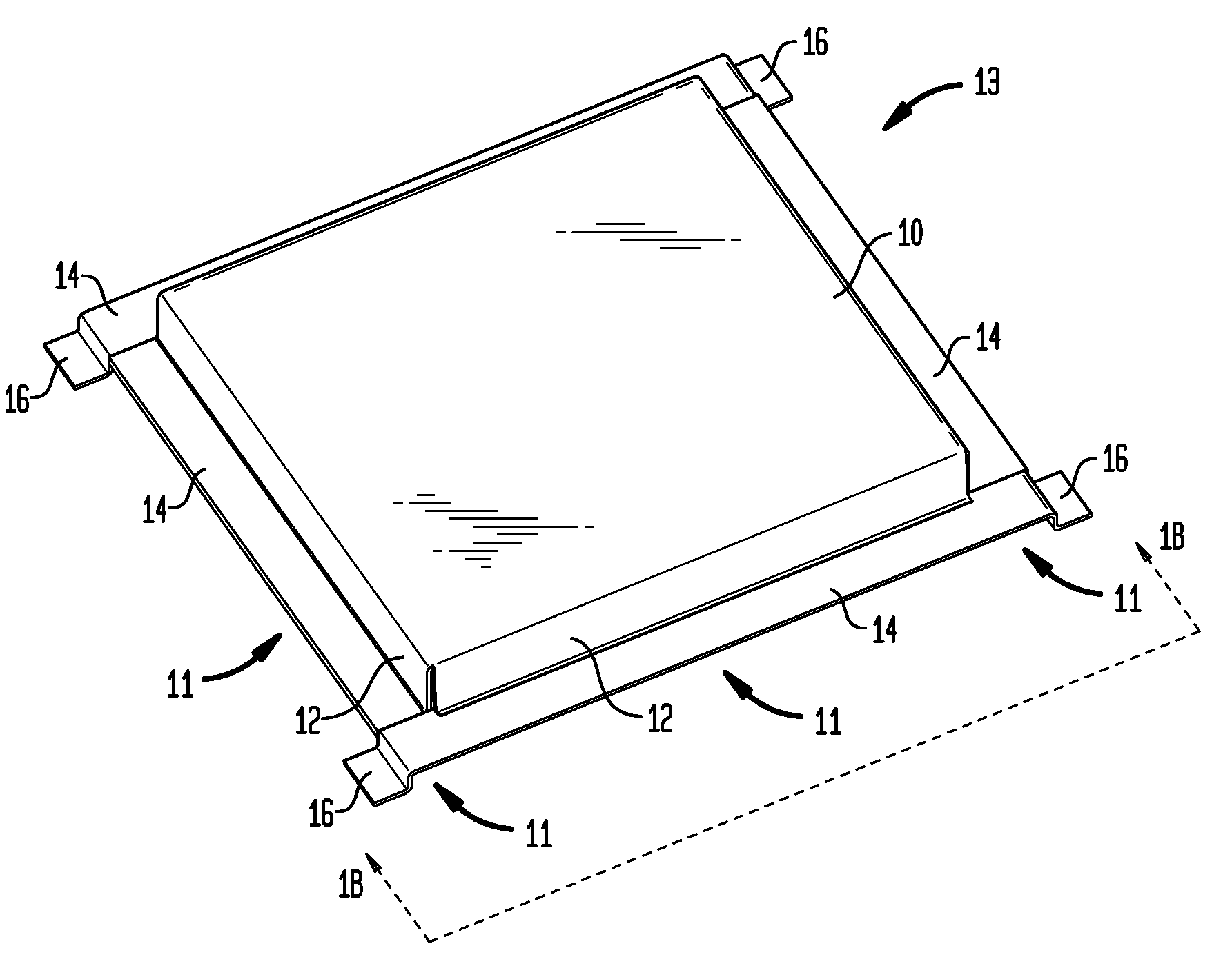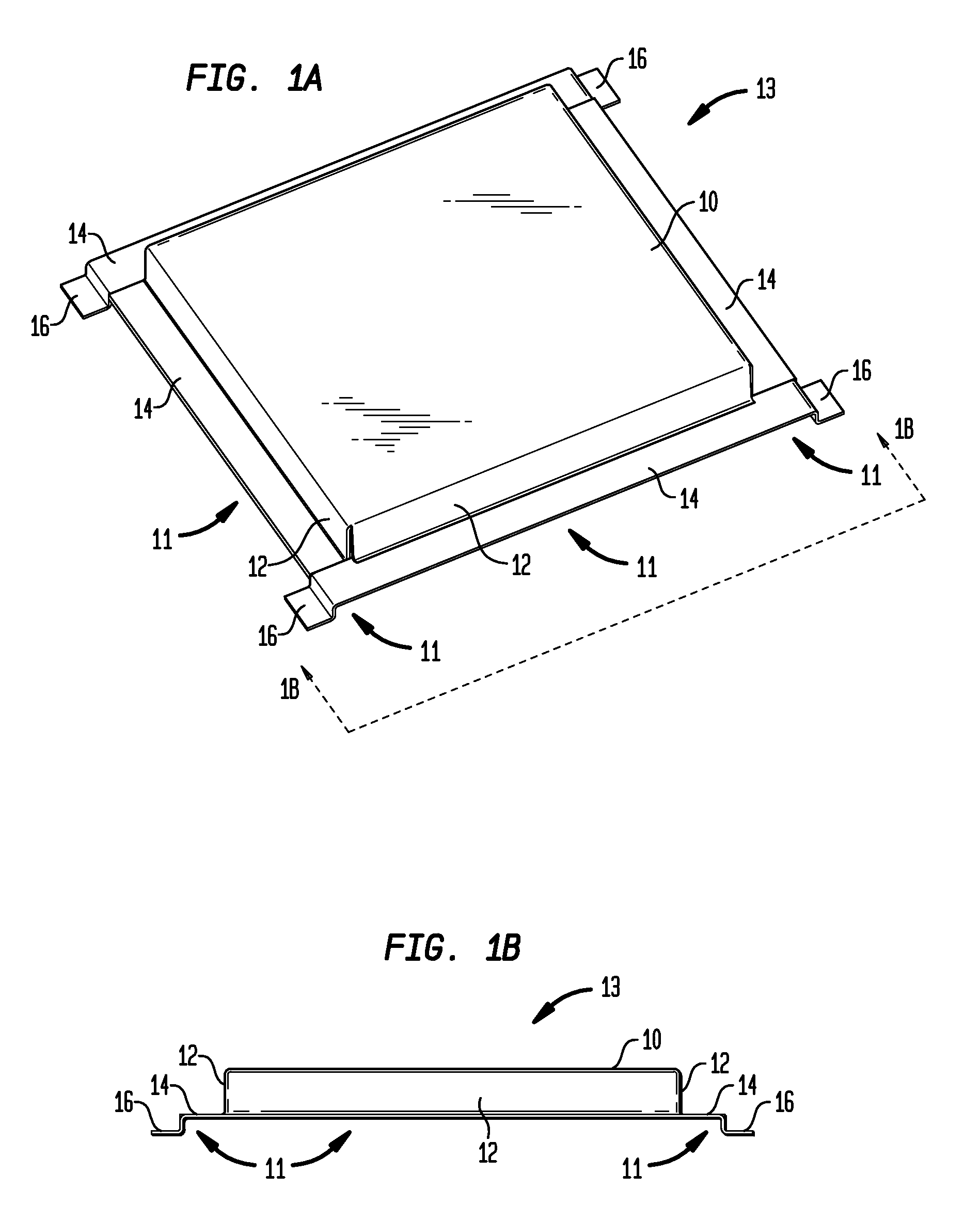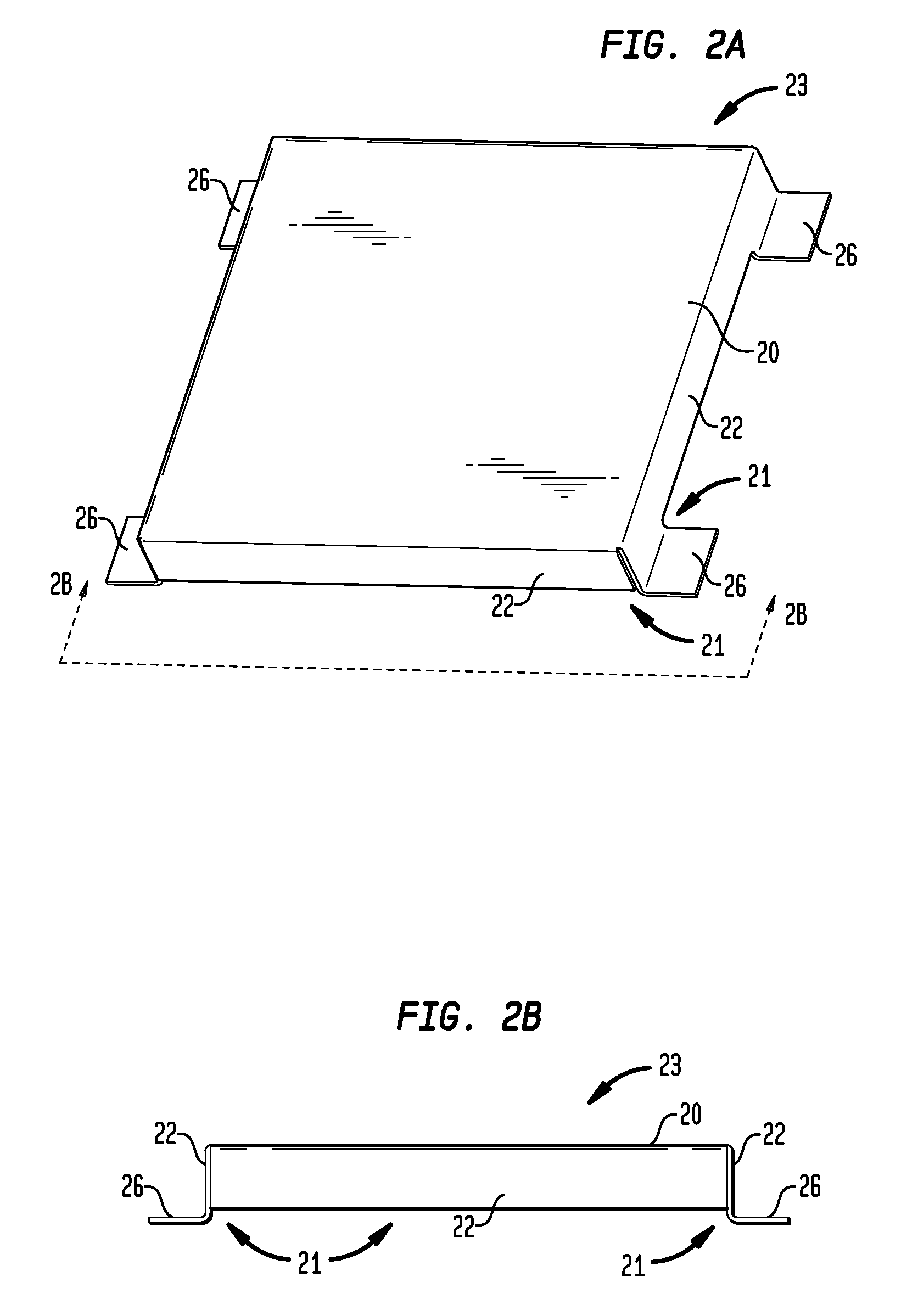Passive Ventilation For Outdoor Electrical Enclosures
an electrical enclosure and passive ventilation technology, applied in the field of outdoor enclosures, can solve the problems of shortening the life expectancy of costly electrical components, sensitive electronics, and damaging the contents inside the enclosure, and achieve the effects of preventing overheating, simple and robust, and reliable solution
- Summary
- Abstract
- Description
- Claims
- Application Information
AI Technical Summary
Benefits of technology
Problems solved by technology
Method used
Image
Examples
first embodiment
[0029]FIG. 1A illustrates a perspective view of the inventive passive ventilation apparatus 13, of this invention. The inventive passive ventilation apparatus 13, comprises a top or main cover 10. The main cover 10, has at least one vertical wall or flange 12, around at least a portion of the peripheral edge of the main cover 10. It is preferred that the vertical wall or flange 12, is substantially vertical to the plane of the main cover 10, however, for some applications the vertical wall or flange 12, could have an angle of between about 30 degrees to about 150 degrees to the plane of the main cover 10, and preferably have an angle of between about 60 degrees to about 120 degrees to the plane of the main cover 10, and more preferably have an angle of between about 80 degrees to about 100 degrees to the plane of the main cover 10. Secured to at least a portion of the vertical wall or flange 12, is at least one horizontal wall or flange 14, and which is around at least a portion of ...
second embodiment
[0031]FIG. 2A illustrates a perspective view of the inventive passive ventilation apparatus 23, of this invention. The inventive passive ventilation apparatus 23, comprises a top or main cover 20. The main cover 20, has at least one vertical wall or flange 22, around at least a portion of the peripheral edge of the main cover 20. It is preferred that the vertical wall or flange 22, is substantially vertical to the plane of the main cover 20, however, for some applications the vertical wall or flange 22, could have an angle of between about 30 degrees to about 150 degrees to the plane of the main cover 20, and preferably have an angle of between about 60 degrees to about 120 degrees to the plane of the main cover 10, and more preferably have an angle of between about 80 degrees to about 100 degrees to the plane of the main cover 20. Secured to at least a portion of the peripheral edge of the vertical flange 22, is at least one feet or flap or step or tab or spacer 26. Care should be ...
third embodiment
[0033]FIG. 3A illustrates a perspective view of the inventive passive ventilation apparatus 33, of this invention. The inventive passive ventilation apparatus 33, comprises a top or main cover 30. The main cover 30, has at least one vertical wall or flange 32, around at least a portion of the peripheral edge of the main cover 30. It is preferred that the vertical wall or flange 32, is substantially vertical to the plane of the main cover 30, however, for some applications the vertical wall or flange 32, could have an angle of between about 30 degrees to about 150 degrees to the plane of the main cover 30, and preferably have an angle of between about 60 degrees to about 120 degrees to the plane of the main cover 30, and more preferably have an angle of between about 80 degrees to about 100 degrees to the plane of the main cover 30. Secured to at least a portion of the vertical wall or flange 32, is at least one horizontal wall or flange 34, and which is around at least a portion of ...
PUM
 Login to View More
Login to View More Abstract
Description
Claims
Application Information
 Login to View More
Login to View More - R&D
- Intellectual Property
- Life Sciences
- Materials
- Tech Scout
- Unparalleled Data Quality
- Higher Quality Content
- 60% Fewer Hallucinations
Browse by: Latest US Patents, China's latest patents, Technical Efficacy Thesaurus, Application Domain, Technology Topic, Popular Technical Reports.
© 2025 PatSnap. All rights reserved.Legal|Privacy policy|Modern Slavery Act Transparency Statement|Sitemap|About US| Contact US: help@patsnap.com



